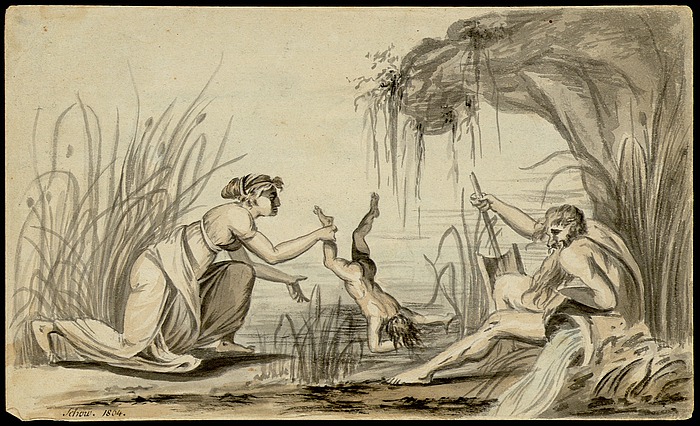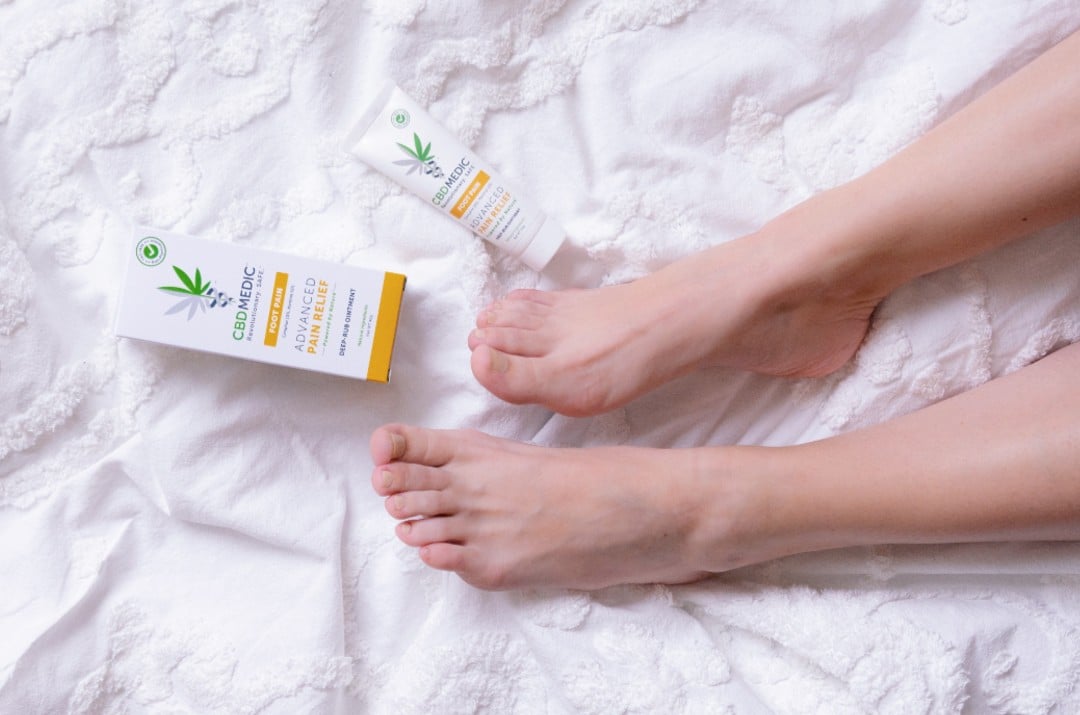Most of us spend a large part of our lives on our feet. Thus, it’s no surprise to discover that so many people suffer from foot pain. The foot is made up of many tiny bones, ligaments, and tendons which work together to help us stand and walk. This means you may experience foot pain in different parts of your foot. Foot pain can have a variety of different causes but one of the most common culprits is in the heel.
Let’s step into the root causes of heel pain and see how you can treat it.
What Causes Heel Pain?
There are many possible causes of heel pain. Below you’ll find some of the most common causes of heel pain.
- Falling down and landing too hard on your heel.
- A tear or rupture in the plantar fascia, the connective tissue which supports the arch of your foot.
- Arthritis in your heel (this could be caused by rheumatoid arthritis, osteoarthritis, or reactive arthritis). *If you think you have rheumatoid arthritis, you should speak to your family doctor or treating physician. Most OTC products, including CBDMEDIC products, are not designed to treat autoimmune diseases.This information is for educational purposes only.
- Heel spur, which occurs when the bone of your heel grows a short extra spur. They are usually painless, but sometimes they can put pressure on the plantar fascia and cause heel pain.
- Achilles tendinitis, which is an inflammation of your Achilles tendon.
- Heel bursitis, which is caused when a sac or blister builds up on the back of the heel, called the bursa, putting pressure on the nerve ending and sometimes causing the Achilles tendon to become inflamed.
- Stress fractures, tiny fractures in the bone of your heel.
Out of all these causes, the most frequent cause of heel pain is damage to the plantar fascia and Achilles tendinitis. As we’ll explore below, these injuries may be caused by normal activities like running or poor foot support.
What is Plantar Fascia Pain?
The plantar fascia is a tough ligament which stretches under your foot from your toes to your heel, connecting with your calf muscle and continuing up your calf. Although this thick band is sturdy, it could become damaged, inflamed (called plantar fascitiis), or even torn due to:
- Sudden weight gain or obesity.
- Flat feet or collapsed arches.
- Wearing shoes which don’t support your feet sufficiently.
- Calf muscles that are too tight and pull too hard on the plantar fascia.
- Running for long distances or spending too much time on your feet.
How to Relieve Plantar Fascia Pain
- Relieving heel pain with rest: Some cases of plantar fasciitis (as well as other types of heel pain) improve on their own. In these cases, the first thing a doctor will tell you is to stay off your feet as much as possible.
- Shoe inserts for plantar fascia pain relief: You can pick up special insoles and orthotics to help ease heel pain. These shoe inserts work in the long term by reducing pressure on the plantar fascia, allowing it to heal.
- Plantar fascia release to relieve heel pain: Gently stretching your calf muscle helps release some of the tightness, which can contribute to plantar fasciitis. Rolling your foot over a bottle of frozen water massages the plantar fascia. It’s also a great way to smoothly stretch out the ligament while numbing the painful area under your heel.
- Surgery for heel pain relief: If you’ve exhausted all the other treatments methods without success, your doctor might advise you to have surgery. Surgical treatment for plantar fasciitis involves removing your plantar fascia from your heel bone to relieve the tension that’s causing the pain. This is strictly a last resort treatment. Surgery can take several days or weeks for your foot to heal.
What is Achilles Tendinitis?

Remember the Greek myth of Achilles? To refresh your memory, he was a great warrior who was half-god, half-man. His mother tried to make him immortal by dipping him in the river Styx. However, because she held him by his heel, he was left vulnerable in this one area. During the Trojan War, this one weak spot ultimately led to his demise. While your outcome is surely less dire, you need your heel to walk and run—even if you’re not a god-like warrior. It’s due to this tendon’s important role in protecting the heel that anatomists decided to name it after the infamous demi-god.
Your Achilles tendon runs down the back of your heel, attaching your heel to your calf muscle. If the tendon becomes inflamed, it can cause pain down the back of your foot and your heel. Achilles tendinitis has several causes including putting too much strain on the tendon, either by overdoing your exercises or by having a naturally right Achilles tendon. You’re at greater risk of developing Achilles tendinitis if you:
- Are an older male.
- Have flat feet, which puts more strain on your Achilles tendon.
- Have high blood pressure.
- Wear shoes that don’t provide enough support to your arches.
How Can You Relieve Pain From Achilles Tendinitis?
- Ice for heel pain relief: Applying ice to your foot brings quick, short-term heel pain relief. Ice reduces the swelling from the inflamed plantar fascia or Achilles tendon. As the inflammation comes down, so does the pain.
- Shoe inserts for Achilles tendinitis pain relief: Doctors often recommend heel wedges to relieve the pressure on the Achilles tendon and ease the pain of Achilles tendinitis.
Arthritis: How Does Arthritis Cause Heel Pain?
While it’s true that arthritis is a degenerative disease that typically worsens with age, it can occur in younger folks as well. When it hits you hard, you feel as if your body is deteriorating. Arthritic heel pain can be caused by the bones in your heel rubbing against each other as the cushioning in the joint wears away. It causes inflammation and swelling to the joints and soft tissue all over the body, including the foot and heel. You can lose your mobility due to the crushing pain.
Learn more on how to relieve pain associated with arthritis.
Physical Therapy for Heel Pain Relief
Most doctors recommend some sort of physical therapy to help relieve pain associated with Achilles tendinitis, plantar fasciitis, and arthritis-related heel pain. Physical therapy may include exercises to strengthen the surrounding muscles supporting your plantar fascia and massage to speed up healing.
Using Pain Relief Remedies for All Types of Heel Pain
Like all types of pain, you might be able to treat heel pain with various painkillers and analgesics. But it’s important that you use caution. Long-term effects of medications can wear on the body, even if they help in the short-term.
Oral Painkillers for Heel Pain Relief
If plantar fascia inflammation is the cause of your heel pain, NSAIDs can help you manage your pain. These medications help bring down the inflammation while also bringing short-term pain relief.
That said, there is a risk that oral painkillers simply mask the pain in your heel, fooling you into thinking that it is healed. The danger in this is that you may end up doing even more damage.
Oral painkillers also carry side effects like stomach pain, heartburn, increased bleeding, stomach ulcers, headaches, and dizziness—or addiction if your doctor prescribes opiates.
Cortisone Shots for Heel Pain Relief
Steroid or cortisone pain relief shots are effective for plantar fascia pain relief and reducing other types of heel pain. But again, you’ll want to proceed with caution. Too many cortisone shots weaken the plantar fascia, making it more likely to rip and cause chronic pain.
How to Use Natural Pain Relief to Reduce Heel Pain
Natural topical pain relief options can help relieve plantar fascia pain, Achilles tendinitis, arthritic heel pain, and other types of foot and body pain while you’re on the road to recovery. Here’s how they work.
- Natural topical analgesics like CBDMEDIC™ are applied directly to your foot, speeding up the pain-relieving effect.
- Natural topical analgesics don’t release pain-relieving medication into the whole body since they are not ingested orally. They relieve only the affected area.
- Using a natural pain relief stick or ointment just before a foot and leg massage can help you to cope with the discomfort for a little longer, allowing the massage therapist to work more deeply in a way that will speed up your recovery.
- Natural active pain-relieving ingredients like menthol and camphor distract you from the pain in your heel so you can carry out the physical therapy stretches and exercises to relieve pain and strengthen supporting muscles. Menthol produces a tingling, cold sensation that distracts you from your discomfort, while camphor affects the pain receptors in your skin to disrupt your perception of pain.
About CBDMEDIC™’s Foot Pain Solutions
CBDMEDIC’s OTC Foot & Ankle Pain Pain Relief Ointment and Foot & Ankle Pain Relief Stick both blend active ingredients camphor and menthol with natural emollients including jojoba seed oil, beeswax, and CBD hemp oil, a THC-free, non-psychoactive, non-addictive component of the hemp plant (Cannabis sativa L.).
The cooling sensation helps stop the pain in its tracks, by interrupting the signals in the brain that process pain. When used together with rest, gentle stretching, massages, and/or physical therapy, you can relieve your pain and aid your recovery process so you can get back on your feet.
Did you enjoy this article? Then check out our article on relieving back pain naturally at home!
Disclaimer: This information is for educational purposes only. It has not been approved by the FDA to diagnose, treat, prevent, cure, or mitigate any diseases or conditions. We use CBD in our products for cosmetic purposes only.


